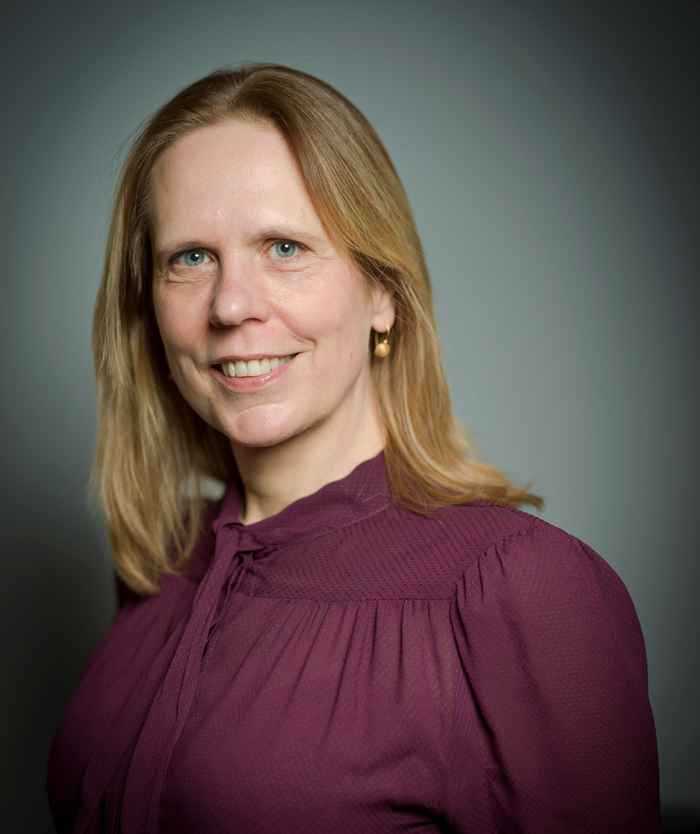Psychologist Marlene Werner wants to close the orgasm gap and the pleasure gap
De Groene Amsterdammer Blog Post by Sanne Bloemink
21 August 2024

Marlene Werner maps out people's sexual experiences using questionnaires.
Pleasure gap. That’s the term Marlene Werner uses when talking about the difference in sexual pleasure between boys and girls. A recent study by the Rutgers Foundation on sexual health among young people under 25 found that 85% of boys had an orgasm with their last sexual partner, compared to 49% of girls. International studies repeatedly confirm a persistent "orgasm gap."
Werner is a psychologist researching how to measure sexual experiences. She would love to close the "pleasure gap." In a meeting room at Amsterdam UMC, she carefully chooses her words. Beside her lies a stack of printed papers with underlined passages, notes, and annotations.
How do you measure sexual pleasure?
"That is immediately one of the most important questions. The experience of sexual pleasure is, of course, always subjective. In the past, researchers often looked at the intensity and frequency of orgasms, but sexual pleasure is more than just an orgasm—though that is often an important part of it.
"You can measure facial expressions associated with pleasure or use brain imaging to identify so-called hedonic hot spots. These areas are linked to the general reward system, which connects to knowledge from my field. We measure sexual pleasure using questionnaires. Using the right words is crucial because the way you phrase questions influences research outcomes and, therefore, the conclusions you can draw."
What does this new concept of sexual pleasure look like?
"In psychology, when studying emotional experiences, we distinguish between state and trait questionnaires. State pleasure refers more to a specific experience in the moment—questions about the intensity of the last orgasm, for example—but also feelings of connection, which are important for many people.
"Trait pleasure is more complex because it relates to a characteristic. But that characteristic is not fixed! If women generally experience fewer orgasms, it’s not because they are inherently different from men. We define trait pleasure as the tendency to experience sex as pleasurable. It’s not an inborn ability.
"How often someone has an orgasm depends on many factors. What kind of stimulation is involved, for example? The orgasm gap between heterosexual men and women is significant, and one of the strongest predictors of orgasm frequency in women is clitoral stimulation.
"Previous research shows that genital response and sexual arousal while watching porn can be similar in men and women. But the level of sexual pleasure during partnered sex differs. This is partly because the heterosexual script prioritizes penetration sex, where clitoral stimulation is not central. Women have fewer opportunities to explore what they enjoy. Treating penis-in-vagina sex as the ‘main course’ not only excludes queer individuals but also focuses too much on what is being done rather than whether it is pleasurable."
"Trait pleasure is never a singular, static concept. A person’s tendency to experience pleasure in sex can change over time. Someone may never have had a strong inclination toward sexual pleasure but might recently enjoy it more due to being in a fulfilling relationship. By distinguishing between state and trait pleasure, we hope to understand what factors contribute to differences in sexual pleasure. Hopefully, this will help close both the orgasm gap and the pleasure gap."
How do you incorporate this broad concept into sexological research?
"With questionnaires such as the new version of the Amsterdam Sexual Pleasure Inventory (ASPI), originally developed here by Ellen Laan and Rik van Lunsen. By the way, Ellen Laan, who passed away in 2022, was my PhD supervisor and a great inspiration to me. In the ASPI, sex is seen as a so-called ‘buffet of rewards.’ One of those rewards is sensual pleasure, but feelings of connection and being valued also play a role."
Does this mean the concept of libido as a personality trait is outdated?
"The concept of libido is part of the drive theory of sexual desire, and that theory is indeed outdated. The drive theory assumes that sexual desire arises from a lack of sex—as if there is a deficit that needs to be replenished or an excess that needs to be released. According to this theory, the more deprived you are, the stronger your desire becomes, increasing your need for sex. Moreover, it suggests that this drive is stronger in men than in women. Unfortunately, this incorrect idea still underlies some research today.
"Sex can certainly fulfil certain human needs, but abstaining from sex is not necessarily harmful. As Ellen Laan always said: ‘Not having sex won’t kill you.’
"Laan compared sex to hunger and appetite. Wanting sex is not hunger—it’s appetite. And that applies to everyone. My fascination with this research is to discover what fulfilling sex can be for all people."
CV: Female Testosterone
Marlene Werner (1989) is a PhD candidate in the Department of Sexology and Psychosomatic Gynecology at Amsterdam UMC. She completed a research master's in clinical psychology and psychological methods at the University of Amsterdam (UvA) and is conducting PhD research on the role of testosterone in the sexual functioning of (cis) women.
Author: Sanne Bloemink
Published in De Groene Amsterdammer on August 21, 2024. Translated by the Institute for Advanced Study.
A version of this article also appeared in the newspaper on September 30, 2024.